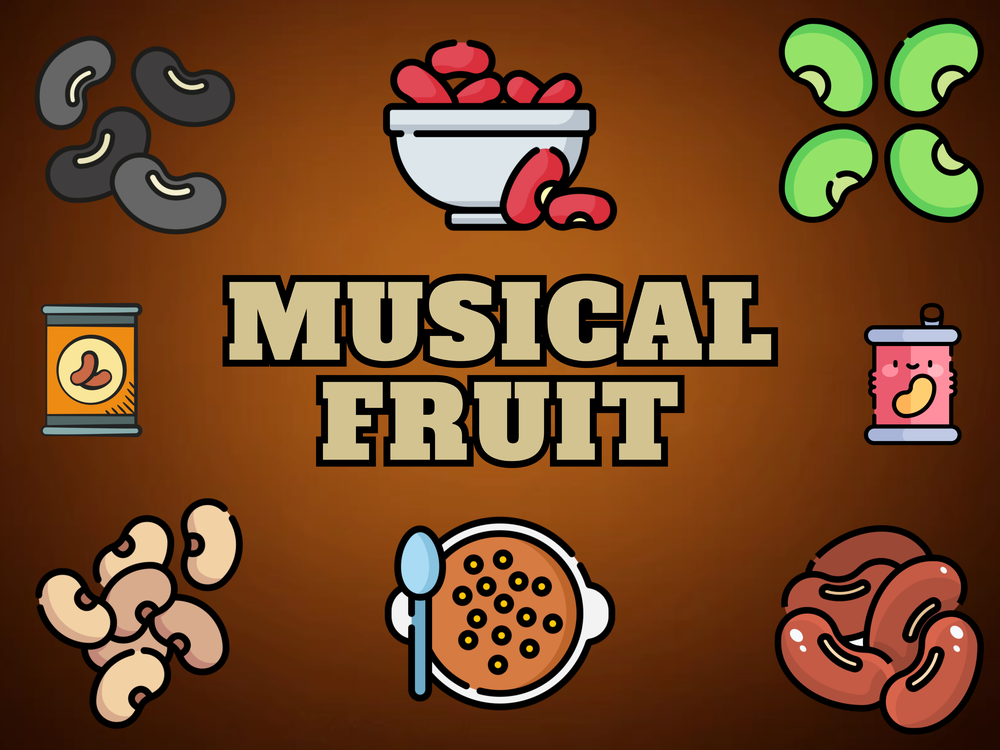
Introduction
Ah beans, our old gassy pals. For a carb source (yes beans are a carb), they are quite high in protein, fiber, and folate. Beans are a very nutrient dense and versatile class of foods, all offering benefits in one way or another, from feeling full to supporting your gut microbiome.
Beans are basically the poor man's protein food, and a personal staple of my diet. While they do vary slightly, you can almost always substitute one type of bean for another with little change in taste, texture, or nutritional profile. Most foods on this list will be displayed based on a 1/4 cup (50 g) serving of dried beans, though some do have different serving sizes.
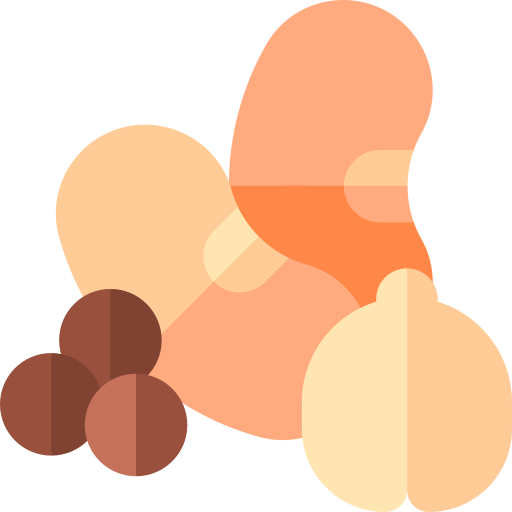
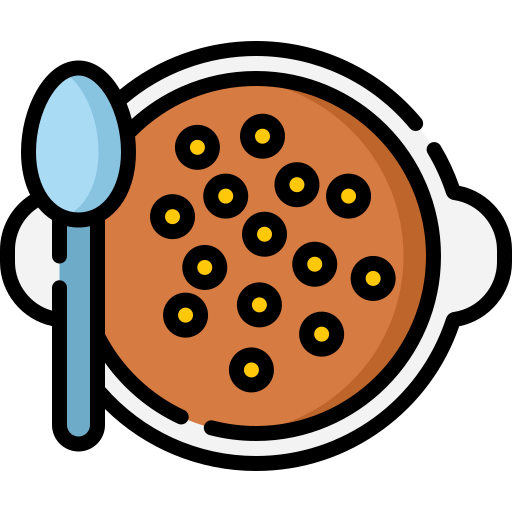
Other Posts in this Series

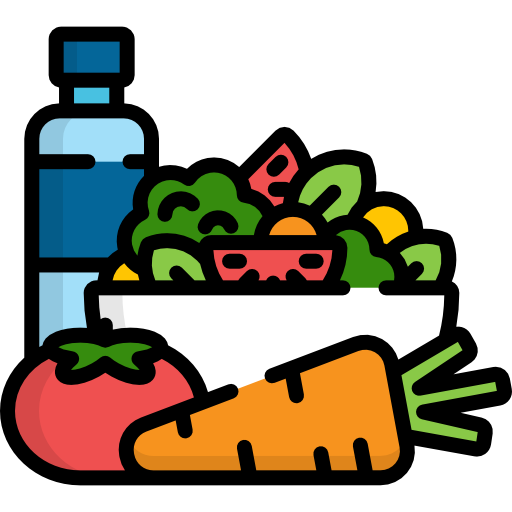
Contents
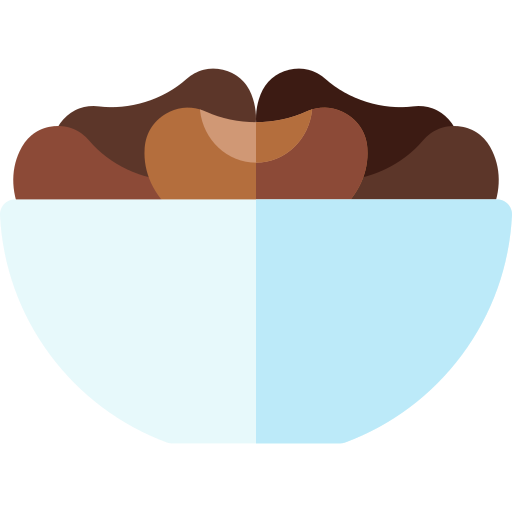

Canned baked beans are really nothing more than a convenience food. They're loaded with added sugar, and are also very high in sodium. One serving of baked beans contains 11 g of sugar. That's nearly 3 tsp, or the almost the amount in 3 Oreo's.
Pre-prepared baked beans are also filled with artificial colors, preservatives, and "natural flavor", whatever the heck that means. To avoid all the junk, I make my own No Sugar Added Baked Beans. As a whole, beans are a very strong class of foods, but products like baked beans are not starting out the list strong.
Serving Size: 1/2 cup (130 g)
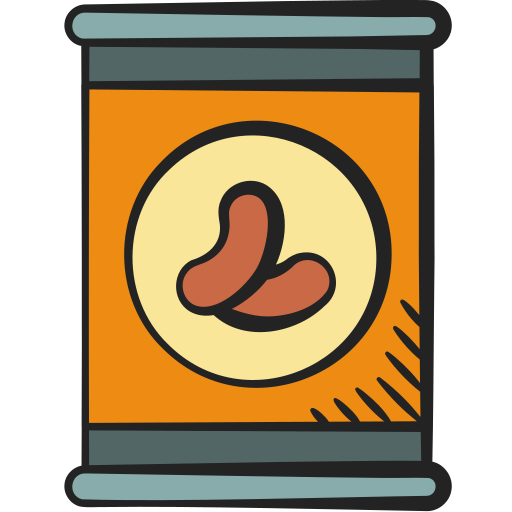
Black beans are the bean in my mind. Along with kidney beans, black beans are the main thing I think of when beans come to mind. And for good reason; black beans are a great source of plant based protein and fiber, as well as folate (vitamin B9), thiamin (vitamin B1), magnesium, and copper. Outside of soybeans and lima beans, black beans are the best source here of potassium. Additionally, their deep color is known to be rich in antioxidants known as anthocyanins, quercetin, and kaempferol.
They're super versatile, being able to find a home in everything from chili to brownies. They're very cheap; coming in at $0.89 for a 15.5 oz can, or $1.50 for a pound of dried beans. Check out my Slow Cooker Dried Beans for a guide on cooking any dried bean variety.
Serving Size: 1/4 cup (50 g)

The Black Eyed Peas area musical group founded in 1995. Their top hits are songs such as I Gotta Feeling, My Humps, and Boom Boom Pow. Wait, wrong script.
Black eyed peas, the bean, are a white bean with a black eye; go figure. Outside of edamame, black eyed peas are the best source on this list of folate, as well as one of the best sources of iron. They are a slightly lower in fiber than their other bean counterparts, but they make up for that by being higher in protein.
Serving Size: 1/4 cup (50 g)

Lentils are seriously underrated. My normal pick is red lentils, but both brown and green lentils are great options too. Often cheaper than beans, and with just as much protein, fiber, folate, and iron, lentils are a great way to switch it up from rice.
In general, beans aren't particularly high in vitamin B5 (pantothenic acid), but lentils are; a 50 g serving of raw lentils contains 1.070 mg (21 % DV) of B5. Though both beans and lentils are incomplete proteins, beans contain more lysine, while lentils are higher in methionine, so pairing them together is a great way to add extra protein from your side dish.
Serving Size: 1/4 cup (50 g)

Cannellini beans, also known as white kidney beans, are different from both great northern beans and navy beans, despite all looking very similar. Cannellini beans in particular contain a butt ton of fiber (emphasis on the butt ton 💩). They're also a great source of non-heme iron, are low in fat, and high in protein.
Because of their light color, they can easily be swapped out for chickpeas in any hummus recipe without anyone really noticing. Or for a hummus-like recipe, see my White Bean Blue Cheese Dressing, which is a funky blue cheese dip with a base of beans instead of mayo. If you're already making a salad dressing, may as well also have some croutons, so see my air fryer White Bean Croutons.
Serving Size: 1/4 cup (50 g)
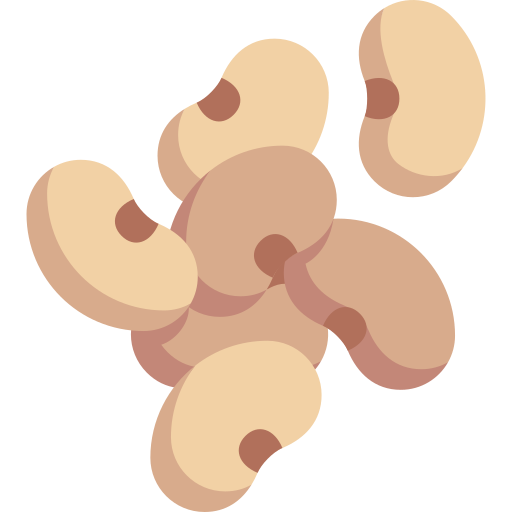
Chickpeas, also known as garbanzo beans, are my personal favorite bean. Unlike other beans, I have no problem eating chickpeas cold straight out of the can; as opposed to other beans, where I normally heat them up and season them. They're one of the highest sources of folate, and also contain a bit more fat than every other bean. Did I mention that they contain a stupid high amount of manganese as well? They are lower in magnesium and potassium, but chickpeas contain more vitamins B5 and B6 than other beans.
When most people think of chickpeas, hummus is probably what comes to mind. I've made plenty of hummus in my day, from plain Classic Tahini Hummus, to roasted veggie hummuses such as Mediterranean Roasted Eggplant Hummus and Creamy Roasted Beet Hummus. There's also some less conventional hummus flavors, like Creamy Pesto Hummus and Golden Sweet Potato Hummus. You can even make sweet hummus, like my Banana Bread Hummus Spread.
I'm no stranger to using chickpeas in my healthy baked goods, such as Chickpea Date Brownies, Chocolate Chip Cookie Skillet, Peanut Butter Date Cookies, and Protein Brownie Bars. You can even whip the "aquafaba", or chickpea water, like you would with egg whites or heavy cream; check out my Aquafaba Whipped Cream for a virtually fat and sugar free whipped topping. Go chickpeas!
Serving Size: 1/4 cup (50 g)

Frozen edamame is a surprisingly great protein source. At only 129 calories for over 13 g of a complete protein with little preparation, these baby soybeans are cheap, simple, and a nutrient powerhouse. Edamame is the highest on this list in folate by far, as well as being significantly higher in fat and lower in carbs, while still being a great source of fiber. That means less net carbs. Uniquely, edamame contains significant amounts of vitamin K and riboflavin. Now only if I can find the damn things; where are they sold??
Serving Size: 1 cup (118 g)
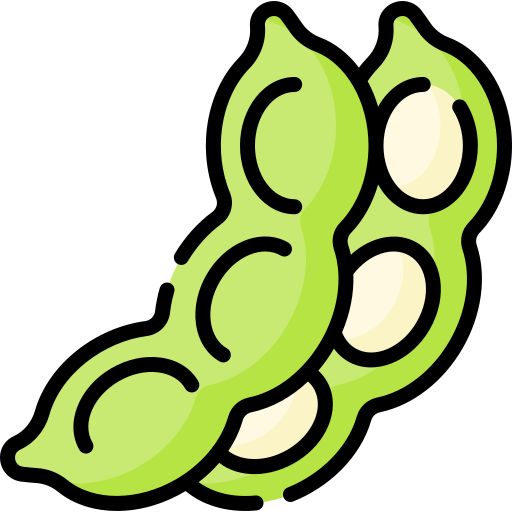
In general, when most people think of beans, they think of black, kidney, or pinto beans. But people sleep on the white beans, like great northern, navy, and cannellini beans. Great northern beans have one of the highest fiber counts on this list, while also being rich sources of vitamins B1 (thiamin) and B9 (folate). Great northern beans also are high in potassium and phosphorus.
Serving Size: 1/4 cup (50 g)
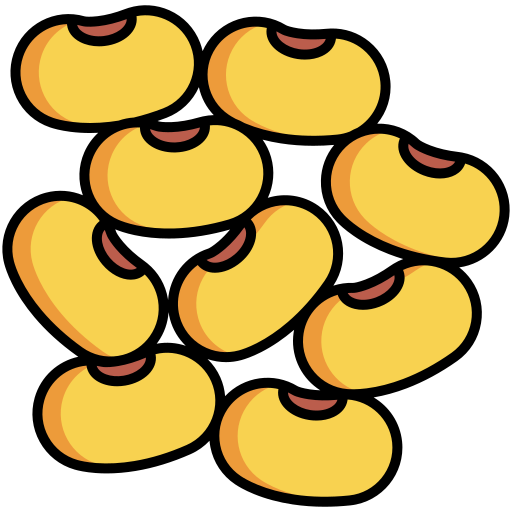
Green lentils, like brown lentils and red lentils are a great source of protein and pretty high in fiber. Compared to standard beans, lentils contain comparable amounts of iron, thiamin, and folate, less magnesium, and more manganese. My favorite part about lentils how they can more easily serve as a rice replacement than beans. You even cook them the same as rice, but in a fraction of the time. Check out my Easy Red Lentils; you can easily swap out red lentils for either green or brown lentils as well.
Serving Size: 1/4 cup (50 g)

Jelly beans are obviously the healthiest choice on this list. We're all told to eat the rainbow, so all those totally naturally occuring colors in these fun beans must mean they're full of phytochemicals. Per serving, jelly beans also contain significantly lower calories, less net carbs, and zero fat. Go low fat diets!
Serving Size: 1 oz (28 g)

Red kidney beans are a great cheap and versatile bean. They come in both light red and dark red, and are virtually the same. Kidney beans contain a high amount of protein and fiber, as well as thiamin, folate, copper, iron, magnesium, and manganese, just like most beans (are you seeing a theme here). Additionally though, the red color of kidney beans is a good source of protective antioxidants known as anthocyanins.
In my mind, kidney beans are the chili bean. As you know me, I'm the chili expert; my Slow Cooker Chili has got to be the recipe I make most often, but I also love Creamy Vegan White Bean Chili with white kidney beans, and even Dead Simple Chili. For bean-free chili, check out my Low FODMAP Chili which uses sweet potatoes instead.
Serving Size: 1/4 cup (50 g)
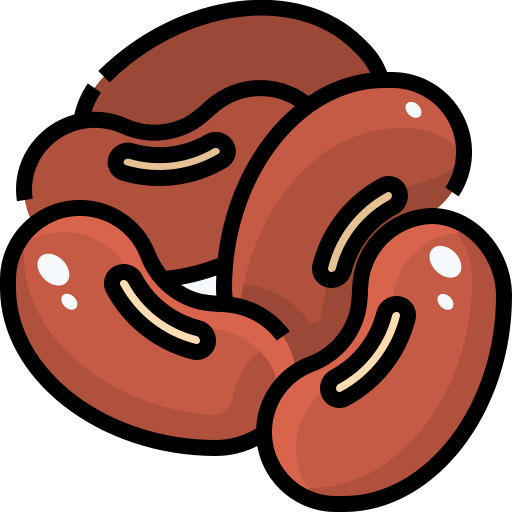
Also known as butter beans, lima beans are a green bean, not to be confused with green beans (string beans). In addition to the usual benefits of beans, that being protein, fiber, vitamin B1, and vitamin B9, lima beans are one of the highest sources on this list of magnesium. They're also high in iron, even more so than most other beans. Lima beans are also quite sweet compared to other beans, containing 4 g of sugar per serving. For context, most other beans have about 1 g per serving.
Serving Size: 1/4 cup (50 g)
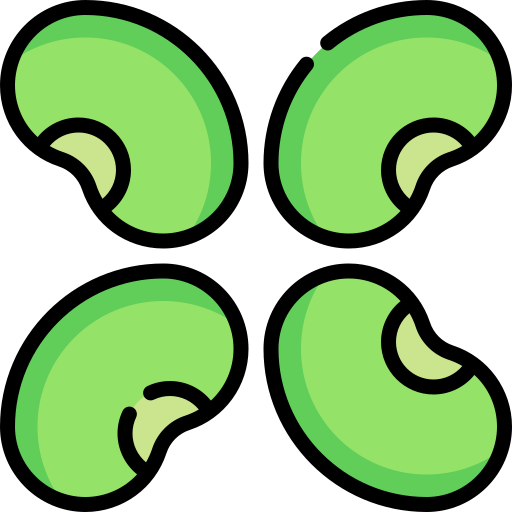
Lupini beans are by far the best source of protein of all the beans (outside of soybeans), at 18 g per serving, double some of the other options on this list. They also contain an equal or higher amount of fiber compared to other beans. Interestingly, lupini beans actaully contain a little bit of fat; nearly 5 g per serving, while chickpeas have 3 g, and most other beans only have aroung 1 g. Their higher fat and fiber content means that lupini beans are also the lowest in both total and net carbs. Lupinis are also one of the richest sources here of copper, manganese, and zinc.
Serving Size: 1/4 cup (50 g)
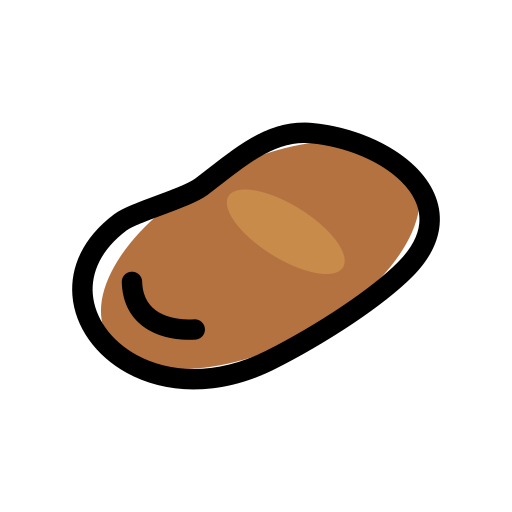
Confusingly, navy beans are not navy; they're white, just like great northern beans and cannellini beans. Navy beans are a great source of fiber, protein, folate, thiamin, copper, manganese, and magnesium.
Navy beans are also the traditional bean used in baked beans. Instead of eating that canned sugar filled "meal", you should check out my No Added Sugar Baked Beans, which is a staple side for me for parties. Or if you really love working navy beans into your diet, make the shockingly amazing White Bean Milkshake, which blends together beans, raisins, milk, and cocoa for a delicious milkshake with 19 g of fiber and 14 g of protein, without added sugar and unhealthy fats.
Serving Size: 1/4 cup (50 g)
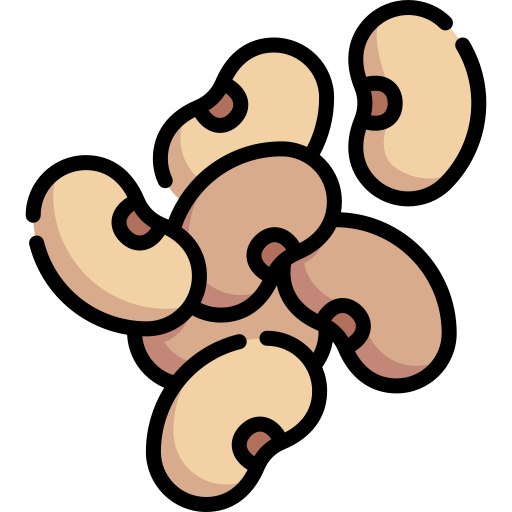
Compared to other beans, pink beans are slightly lower in fiber and protein, but the difference isn't that significant. Pink beans make up for this by being higher in folate though, as well as magnesium and manganese. The pink/red color of these beans are also a good source of antioxidants, supporting heart health.
Serving Size: 1/4 cup (50 g)
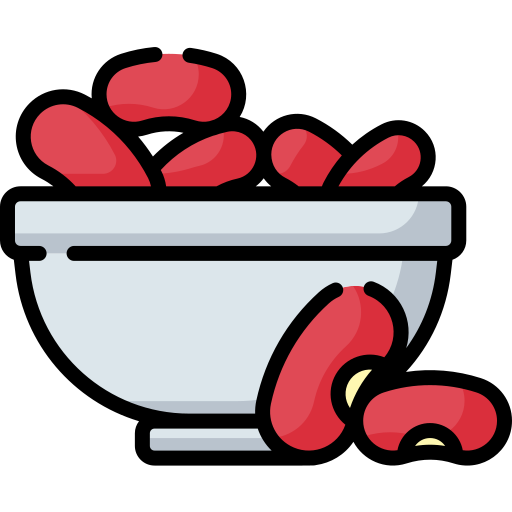
Outside of black beans and kidney beans, pinto beans are the main staple bean, at least in my opinion. Pinto beans are unsurprisingly a good source of fiber and protein, ranking around the average compared to the rest of the list. They do contain more folate and copper than most other beans though, as well as the mineral selenium, which is unique for beans.
You can pretty much use any bean in place of another, though pinto beans are the traditional bean used in refried beans. But instead of eating the processed stuff, you should make my homemade Refried Pinto Beans.
You can also bake with pinto beans, like you would with other beans, such as chickpeas and black beans. I've personally swapped out chickpeas in my Chocolate Chip Date Cookies with zero change in taste or texture. More notably, check out my post Improving the Pinto Bean Cake, where I baked a viral pinto bean cake recipe and improved on it, making it healthier and tastier.
Serving Size: 1/4 cup (50 g)
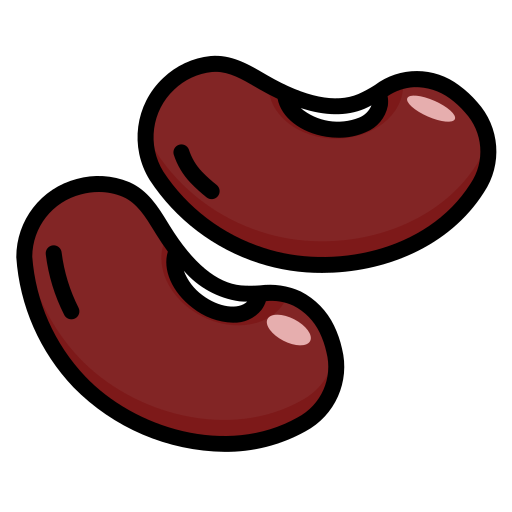
Our final lentil type is red lentils. Compared to brown lentils and green lentils, red lentils contain ever so slightly more fat and calories (about 0.5 g per serving), the same amounts of protein and fiber, and slighly more iron. Red lentils also have quite a bit more copper, but they contain significantly less folate. I was also surprised to learn that the red color of red lentils doesn't contribute any vitamin A, which is disappointing.
Serving Size: 1/4 cup (50 g)
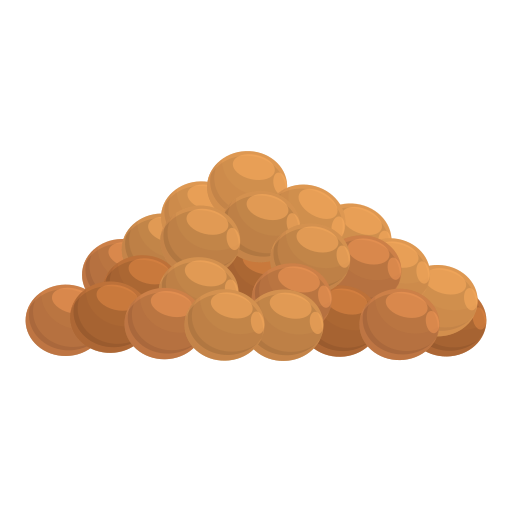
As refried beans are more than just plain beans, they understandably contain less fiber and protein. They also have significantly less micronutrients; contents of thiamin, folate, iron, magnesium, and more are all fractions of the other plain beans on this list. You could get a lot worse with prepared processed meals than refried beans, but you can also do better with homemade.
A can of storebought refried beans is significantly healthier than canned baked beans though. They pretty much just contain pinto beans, fat (typically lard), and spices. Though I do prefer to make homemade Refried Pinto Beans myself, as it's less processed, tastes better, and I can control the amount of fat and salt.
Serving Size: 1/2 cup (130 g)
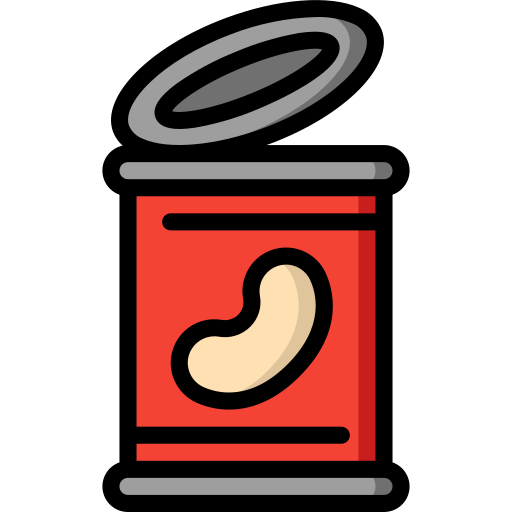
Finally, I've saved the best for last: soybeans. Why do I say soybeans are the best? Because they're probably the most nutritious. Soybeans are the higest in protein per serving, even more than lupini beans. While they do contain less fiber, soybeans are lower in net carbs and higher in healthy fats, making them significantly lower on the glycemic index. Soybeans are also one of the highest contributors on this list of the minerals calcium, copper, iron, magnesium, manganese, phosphorus, potassium, selenium, and zinc. Compared to other types of beans, soybeans contain significantly higher amounts of vitamins B2 (riboflavin) and K, as well as choline.
They're a great vegetarian option that supports heart health, and should be an occasional staple of your diet. Used to make tofu, tempeh, soy sauce, and miso, soybeans are the only bean that is considered a complete protein. You can also eat immature soybeans; you probably know them more commonly as edamame. This also means that tofu, edamame, etc. are all complete proteins, great to have in place of, or in addition to, meat, dairy, and eggs.
Serving Size: 1/4 cup (50 g)

Nutritional Comparison
Scroll to the right to read information about every bean
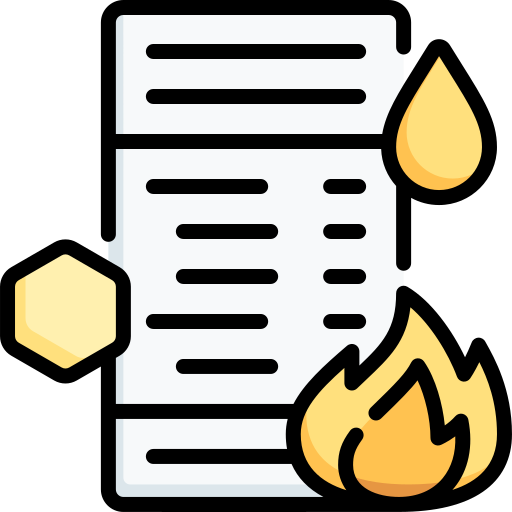
References
Ah beans, our old gassy pals. For a carb source (yes beans are a carb), they are quite high in protein, fiber, and folate. Beans are a very nutrient dense and versatile class of foods, all offering benefits in one way or another, from feeling full to supporting your gut microbiome.
Beans are basically the poor man's protein food, and a personal staple of my diet. While they do vary slightly, you can almost always substitute one type of bean for another with little change in taste, texture, or nutritional profile. Most foods on this list will be displayed based on a 1/4 cup (50 g) serving of dried beans, though some do have different serving sizes.


Other Posts in this Series
- Let's Meet The Meats
- I'm Nuts For Nuts
- I See Seeds In Your Future
- Beans Beans The Musical Fruit
- Going Bananas For Bananas
- Lettuce Turnip The Beet
- I'm Hooked On Fish
- A Grain Of Truth


Contents
- Baked Beans
- Black Beans
- Black Eyed Peas
- Brown Lentils
- Cannellini Beans
- Chickpeas
- Edamame
- Great Northern Beans
- Green Lentils
- Jelly Beans
- Kidney Beans
- Lima Beans
- Lupini Beans
- Navy Beans
- Pink Beans
- Pinto Beans
- Red Lentils
- Refried Beans
- Soybeans
- Nutritional Comparison


Canned baked beans are really nothing more than a convenience food. They're loaded with added sugar, and are also very high in sodium. One serving of baked beans contains 11 g of sugar. That's nearly 3 tsp, or the almost the amount in 3 Oreo's.
Pre-prepared baked beans are also filled with artificial colors, preservatives, and "natural flavor", whatever the heck that means. To avoid all the junk, I make my own No Sugar Added Baked Beans. As a whole, beans are a very strong class of foods, but products like baked beans are not starting out the list strong.
Serving Size: 1/2 cup (130 g)
------------------------------------------
Calories: 137
Calories: 137
------------------------------------------
Total Fat: 1.2g (1 %)
Total Carbohydrate: 28.0g (10 %)
Fiber: 5.7g (21 %)
Net Carbs: 22.3g
Total Sugar: 10.7g
Protein: 5.9g (12 %)
Total Fat: 1.2g (1 %)
Total Carbohydrate: 28.0g (10 %)
Fiber: 5.7g (21 %)
Net Carbs: 22.3g
Total Sugar: 10.7g
Protein: 5.9g (12 %)
------------------------------------------
Vitamin B1 (Thiamin): 0.04mg (4 %)
Vitamin B9 (Folate): 10.4mcg (3 %)
------------------------------------------
Copper: 0.22mg (25 %)
Iron: 1.82mg (10 %)
Magnesium: 39mg (9 %)
Manganese: 0.0mg (0 %)
Phosphorus: 114mg (9 %)
Potassium: 300mg (7 %)
Zinc: 0.66mg (7 %)
------------------------------------------Vitamin B1 (Thiamin): 0.04mg (4 %)
Vitamin B9 (Folate): 10.4mcg (3 %)
------------------------------------------
Copper: 0.22mg (25 %)
Iron: 1.82mg (10 %)
Magnesium: 39mg (9 %)
Manganese: 0.0mg (0 %)
Phosphorus: 114mg (9 %)
Potassium: 300mg (7 %)
Zinc: 0.66mg (7 %)

Black beans are the bean in my mind. Along with kidney beans, black beans are the main thing I think of when beans come to mind. And for good reason; black beans are a great source of plant based protein and fiber, as well as folate (vitamin B9), thiamin (vitamin B1), magnesium, and copper. Outside of soybeans and lima beans, black beans are the best source here of potassium. Additionally, their deep color is known to be rich in antioxidants known as anthocyanins, quercetin, and kaempferol.
They're super versatile, being able to find a home in everything from chili to brownies. They're very cheap; coming in at $0.89 for a 15.5 oz can, or $1.50 for a pound of dried beans. Check out my Slow Cooker Dried Beans for a guide on cooking any dried bean variety.
Serving Size: 1/4 cup (50 g)
------------------------------------------
Calories: 171
Calories: 171
------------------------------------------
Total Fat: 0.7g (1 %)
Total Carbohydrate: 31.2g (12 %)
Fiber: 7.8g (28 %)
Net Carbs: 23.4g
Total Sugar: 1.1g
Protein: 10.8g (22 %)
Total Fat: 0.7g (1 %)
Total Carbohydrate: 31.2g (12 %)
Fiber: 7.8g (28 %)
Net Carbs: 23.4g
Total Sugar: 1.1g
Protein: 10.8g (22 %)
------------------------------------------
Vitamin B1 (Thiamin): 0.45mg (38 %)
Vitamin B9 (Folate): 222.0mcg (56 %)
------------------------------------------
Copper: 0.42mg (47 %)
Iron: 2.51mg (14 %)
Magnesium: 86mg (21 %)
Manganese: 0.53mg (23 %)
Phosphorus: 176mg (14 %)
Potassium: 742mg (16 %)
Zinc: 1.83mg (17 %)
------------------------------------------Vitamin B1 (Thiamin): 0.45mg (38 %)
Vitamin B9 (Folate): 222.0mcg (56 %)
------------------------------------------
Copper: 0.42mg (47 %)
Iron: 2.51mg (14 %)
Magnesium: 86mg (21 %)
Manganese: 0.53mg (23 %)
Phosphorus: 176mg (14 %)
Potassium: 742mg (16 %)
Zinc: 1.83mg (17 %)

Black eyed peas, the bean, are a white bean with a black eye; go figure. Outside of edamame, black eyed peas are the best source on this list of folate, as well as one of the best sources of iron. They are a slightly lower in fiber than their other bean counterparts, but they make up for that by being higher in protein.
Serving Size: 1/4 cup (50 g)
------------------------------------------
Calories: 168
Calories: 168
------------------------------------------
Total Fat: 0.6g (1 %)
Total Carbohydrate: 30.0g (11 %)
Fiber: 5.3g (19 %)
Net Carbs: 24.7g
Total Sugar: 3.5g
Protein: 11.8g (24 %)
Total Fat: 0.6g (1 %)
Total Carbohydrate: 30.0g (11 %)
Fiber: 5.3g (19 %)
Net Carbs: 24.7g
Total Sugar: 3.5g
Protein: 11.8g (24 %)
------------------------------------------
Vitamin B1 (Thiamin): 0.43mg (36 %)
Vitamin B9 (Folate): 316.5mcg (79 %)
------------------------------------------
Copper: 0.42mg (47 %)
Iron: 4.14mg (23 %)
Magnesium: 92mg (22 %)
Manganese: 0.76mg (33 %)
Phosphorus: 212mg (17 %)
Potassium: 556mg (12 %)
Zinc: 1.69mg (16 %)
------------------------------------------Vitamin B1 (Thiamin): 0.43mg (36 %)
Vitamin B9 (Folate): 316.5mcg (79 %)
------------------------------------------
Copper: 0.42mg (47 %)
Iron: 4.14mg (23 %)
Magnesium: 92mg (22 %)
Manganese: 0.76mg (33 %)
Phosphorus: 212mg (17 %)
Potassium: 556mg (12 %)
Zinc: 1.69mg (16 %)

Lentils are seriously underrated. My normal pick is red lentils, but both brown and green lentils are great options too. Often cheaper than beans, and with just as much protein, fiber, folate, and iron, lentils are a great way to switch it up from rice.
In general, beans aren't particularly high in vitamin B5 (pantothenic acid), but lentils are; a 50 g serving of raw lentils contains 1.070 mg (21 % DV) of B5. Though both beans and lentils are incomplete proteins, beans contain more lysine, while lentils are higher in methionine, so pairing them together is a great way to add extra protein from your side dish.
Serving Size: 1/4 cup (50 g)
------------------------------------------
Calories: 176
Calories: 176
------------------------------------------
Total Fat: 0.5g (1 %)
Total Carbohydrate: 31.7g (12 %)
Fiber: 5.4g (19 %)
Net Carbs: 26.3g
Total Sugar: 1.0g
Protein: 12.3g (25 %)
Total Fat: 0.5g (1 %)
Total Carbohydrate: 31.7g (12 %)
Fiber: 5.4g (19 %)
Net Carbs: 26.3g
Total Sugar: 1.0g
Protein: 12.3g (25 %)
------------------------------------------
Vitamin B1 (Thiamin): 0.44mg (37 %)
Vitamin B9 (Folate): 239.5mcg (60 %)
------------------------------------------
Copper: 0.38mg (42 %)
Iron: 3.26mg (18 %)
Magnesium: 24mg (6 %)
Manganese: 0.7mg (31 %)
Phosphorus: 141mg (11 %)
Potassium: 339mg (7 %)
Zinc: 1.64mg (15 %)
------------------------------------------Vitamin B1 (Thiamin): 0.44mg (37 %)
Vitamin B9 (Folate): 239.5mcg (60 %)
------------------------------------------
Copper: 0.38mg (42 %)
Iron: 3.26mg (18 %)
Magnesium: 24mg (6 %)
Manganese: 0.7mg (31 %)
Phosphorus: 141mg (11 %)
Potassium: 339mg (7 %)
Zinc: 1.64mg (15 %)

Cannellini beans, also known as white kidney beans, are different from both great northern beans and navy beans, despite all looking very similar. Cannellini beans in particular contain a butt ton of fiber (emphasis on the butt ton 💩). They're also a great source of non-heme iron, are low in fat, and high in protein.
Because of their light color, they can easily be swapped out for chickpeas in any hummus recipe without anyone really noticing. Or for a hummus-like recipe, see my White Bean Blue Cheese Dressing, which is a funky blue cheese dip with a base of beans instead of mayo. If you're already making a salad dressing, may as well also have some croutons, so see my air fryer White Bean Croutons.
Serving Size: 1/4 cup (50 g)
------------------------------------------
Calories: 167
Calories: 167
------------------------------------------
Total Fat: 0.4g (1 %)
Total Carbohydrate: 30.0g (11 %)
Fiber: 12.5g (45 %)
Net Carbs: 17.5g
Total Sugar: 1.1g
Protein: 11.8g (24 %)
Total Fat: 0.4g (1 %)
Total Carbohydrate: 30.0g (11 %)
Fiber: 12.5g (45 %)
Net Carbs: 17.5g
Total Sugar: 1.1g
Protein: 11.8g (24 %)
------------------------------------------
Vitamin B1 (Thiamin): 0.26mg (22 %)
Vitamin B9 (Folate): 197.0mcg (49 %)
------------------------------------------
Copper: 0.48mg (54 %)
Iron: 4.1mg (23 %)
Magnesium: 70mg (17 %)
Manganese: 0.51mg (22 %)
Phosphorus: 204mg (17 %)
Potassium: 703mg (15 %)
Zinc: 1.4mg (13 %)
------------------------------------------Vitamin B1 (Thiamin): 0.26mg (22 %)
Vitamin B9 (Folate): 197.0mcg (49 %)
------------------------------------------
Copper: 0.48mg (54 %)
Iron: 4.1mg (23 %)
Magnesium: 70mg (17 %)
Manganese: 0.51mg (22 %)
Phosphorus: 204mg (17 %)
Potassium: 703mg (15 %)
Zinc: 1.4mg (13 %)

Chickpeas, also known as garbanzo beans, are my personal favorite bean. Unlike other beans, I have no problem eating chickpeas cold straight out of the can; as opposed to other beans, where I normally heat them up and season them. They're one of the highest sources of folate, and also contain a bit more fat than every other bean. Did I mention that they contain a stupid high amount of manganese as well? They are lower in magnesium and potassium, but chickpeas contain more vitamins B5 and B6 than other beans.
When most people think of chickpeas, hummus is probably what comes to mind. I've made plenty of hummus in my day, from plain Classic Tahini Hummus, to roasted veggie hummuses such as Mediterranean Roasted Eggplant Hummus and Creamy Roasted Beet Hummus. There's also some less conventional hummus flavors, like Creamy Pesto Hummus and Golden Sweet Potato Hummus. You can even make sweet hummus, like my Banana Bread Hummus Spread.
I'm no stranger to using chickpeas in my healthy baked goods, such as Chickpea Date Brownies, Chocolate Chip Cookie Skillet, Peanut Butter Date Cookies, and Protein Brownie Bars. You can even whip the "aquafaba", or chickpea water, like you would with egg whites or heavy cream; check out my Aquafaba Whipped Cream for a virtually fat and sugar free whipped topping. Go chickpeas!
Serving Size: 1/4 cup (50 g)
------------------------------------------
Calories: 189
Calories: 189
------------------------------------------
Total Fat: 3.0g (4 %)
Total Carbohydrate: 31.5g (12 %)
Fiber: 6.1g (22 %)
Net Carbs: 25.4g
Total Sugar: 5.4g
Protein: 10.2g (21 %)
Total Fat: 3.0g (4 %)
Total Carbohydrate: 31.5g (12 %)
Fiber: 6.1g (22 %)
Net Carbs: 25.4g
Total Sugar: 5.4g
Protein: 10.2g (21 %)
------------------------------------------
Vitamin B1 (Thiamin): 0.24mg (20 %)
Vitamin B9 (Folate): 278.5mcg (70 %)
------------------------------------------
Copper: 0.33mg (37 %)
Iron: 2.16mg (12 %)
Magnesium: 40mg (10 %)
Manganese: 10.65mg (463 %)
Phosphorus: 126mg (10 %)
Potassium: 359mg (8 %)
Zinc: 1.38mg (13 %)
------------------------------------------Vitamin B1 (Thiamin): 0.24mg (20 %)
Vitamin B9 (Folate): 278.5mcg (70 %)
------------------------------------------
Copper: 0.33mg (37 %)
Iron: 2.16mg (12 %)
Magnesium: 40mg (10 %)
Manganese: 10.65mg (463 %)
Phosphorus: 126mg (10 %)
Potassium: 359mg (8 %)
Zinc: 1.38mg (13 %)

Frozen edamame is a surprisingly great protein source. At only 129 calories for over 13 g of a complete protein with little preparation, these baby soybeans are cheap, simple, and a nutrient powerhouse. Edamame is the highest on this list in folate by far, as well as being significantly higher in fat and lower in carbs, while still being a great source of fiber. That means less net carbs. Uniquely, edamame contains significant amounts of vitamin K and riboflavin. Now only if I can find the damn things; where are they sold??
Serving Size: 1 cup (118 g)
------------------------------------------
Calories: 129
Calories: 129
------------------------------------------
Total Fat: 5.6g (7 %)
Total Carbohydrate: 9.0g (4 %)
Fiber: 5.7g (20 %)
Net Carbs: 3.3g
Total Sugar: 2.9g
Protein: 13.2g (26 %)
Total Fat: 5.6g (7 %)
Total Carbohydrate: 9.0g (4 %)
Fiber: 5.7g (20 %)
Net Carbs: 3.3g
Total Sugar: 2.9g
Protein: 13.2g (26 %)
------------------------------------------
Vitamin B1 (Thiamin): 0.18mg (14 %)
Vitamin B9 (Folate): 357.5mcg (90 %)
------------------------------------------
Copper: 0.38mg (42 %)
Iron: 2.49mg (14 %)
Magnesium: 72mg (18 %)
Manganese: 1.19mg (52 %)
Phosphorus: 190mg (15 %)
Potassium: 569mg (12 %)
Zinc: 1.56mg (14 %)
------------------------------------------Vitamin B1 (Thiamin): 0.18mg (14 %)
Vitamin B9 (Folate): 357.5mcg (90 %)
------------------------------------------
Copper: 0.38mg (42 %)
Iron: 2.49mg (14 %)
Magnesium: 72mg (18 %)
Manganese: 1.19mg (52 %)
Phosphorus: 190mg (15 %)
Potassium: 569mg (12 %)
Zinc: 1.56mg (14 %)

In general, when most people think of beans, they think of black, kidney, or pinto beans. But people sleep on the white beans, like great northern, navy, and cannellini beans. Great northern beans have one of the highest fiber counts on this list, while also being rich sources of vitamins B1 (thiamin) and B9 (folate). Great northern beans also are high in potassium and phosphorus.
Serving Size: 1/4 cup (50 g)
------------------------------------------
Calories: 170
Calories: 170
------------------------------------------
Total Fat: 0.6g (1 %)
Total Carbohydrate: 31.2g (12 %)
Fiber: 10.1g (36 %)
Net Carbs: 21.1g
Total Sugar: 1.1g
Protein: 10.9g (22 %)
Total Fat: 0.6g (1 %)
Total Carbohydrate: 31.2g (12 %)
Fiber: 10.1g (36 %)
Net Carbs: 21.1g
Total Sugar: 1.1g
Protein: 10.9g (22 %)
------------------------------------------
Vitamin B1 (Thiamin): 0.33mg (27 %)
Vitamin B9 (Folate): 241.0mcg (60 %)
------------------------------------------
Copper: 0.42mg (47 %)
Iron: 2.74mg (15 %)
Magnesium: 95mg (23 %)
Manganese: 0.71mg (31 %)
Phosphorus: 224mg (18 %)
Potassium: 694mg (15 %)
Zinc: 1.16mg (11 %)
------------------------------------------Vitamin B1 (Thiamin): 0.33mg (27 %)
Vitamin B9 (Folate): 241.0mcg (60 %)
------------------------------------------
Copper: 0.42mg (47 %)
Iron: 2.74mg (15 %)
Magnesium: 95mg (23 %)
Manganese: 0.71mg (31 %)
Phosphorus: 224mg (18 %)
Potassium: 694mg (15 %)
Zinc: 1.16mg (11 %)

Green lentils, like brown lentils and red lentils are a great source of protein and pretty high in fiber. Compared to standard beans, lentils contain comparable amounts of iron, thiamin, and folate, less magnesium, and more manganese. My favorite part about lentils how they can more easily serve as a rice replacement than beans. You even cook them the same as rice, but in a fraction of the time. Check out my Easy Red Lentils; you can easily swap out red lentils for either green or brown lentils as well.
Serving Size: 1/4 cup (50 g)
------------------------------------------
Calories: 176
Calories: 176
------------------------------------------
Total Fat: 0.5g (1 %)
Total Carbohydrate: 31.7g (12 %)
Fiber: 5.4g (19 %)
Net Carbs: 26.3g
Total Sugar: 1.0g
Protein: 12.3g (25 %)
Total Fat: 0.5g (1 %)
Total Carbohydrate: 31.7g (12 %)
Fiber: 5.4g (19 %)
Net Carbs: 26.3g
Total Sugar: 1.0g
Protein: 12.3g (25 %)
------------------------------------------
Vitamin B1 (Thiamin): 0.44mg (37 %)
Vitamin B9 (Folate): 239.5mcg (60 %)
------------------------------------------
Copper: 0.38mg (42 %)
Iron: 3.26mg (18 %)
Magnesium: 24mg (6 %)
Manganese: 0.7mg (31 %)
Phosphorus: 141mg (11 %)
Potassium: 339mg (7 %)
Zinc: 1.64mg (15 %)
------------------------------------------Vitamin B1 (Thiamin): 0.44mg (37 %)
Vitamin B9 (Folate): 239.5mcg (60 %)
------------------------------------------
Copper: 0.38mg (42 %)
Iron: 3.26mg (18 %)
Magnesium: 24mg (6 %)
Manganese: 0.7mg (31 %)
Phosphorus: 141mg (11 %)
Potassium: 339mg (7 %)
Zinc: 1.64mg (15 %)

Serving Size: 1 oz (28 g)
------------------------------------------
Calories: 105
Calories: 105
------------------------------------------
Total Fat: 0.0g (0 %)
Total Carbohydrate: 26.2g (10 %)
Fiber: 0.1g (0 %)
Net Carbs: 26.1g
Total Sugar: 19.6g
Protein: 0.0g (0 %)
Total Fat: 0.0g (0 %)
Total Carbohydrate: 26.2g (10 %)
Fiber: 0.1g (0 %)
Net Carbs: 26.1g
Total Sugar: 19.6g
Protein: 0.0g (0 %)
------------------------------------------
Vitamin B1 (Thiamin): 0.0mg (0 %)
Vitamin B9 (Folate): 0.0mcg (0 %)
------------------------------------------
Copper: 0.01mg (1 %)
Iron: 0.04mg (0 %)
Magnesium: 1mg (0 %)
Manganese: 0.01mg (1 %)
Phosphorus: 1mg (0 %)
Potassium: 10mg (0 %)
Zinc: 0.01mg (0 %)
------------------------------------------Vitamin B1 (Thiamin): 0.0mg (0 %)
Vitamin B9 (Folate): 0.0mcg (0 %)
------------------------------------------
Copper: 0.01mg (1 %)
Iron: 0.04mg (0 %)
Magnesium: 1mg (0 %)
Manganese: 0.01mg (1 %)
Phosphorus: 1mg (0 %)
Potassium: 10mg (0 %)
Zinc: 0.01mg (0 %)

Red kidney beans are a great cheap and versatile bean. They come in both light red and dark red, and are virtually the same. Kidney beans contain a high amount of protein and fiber, as well as thiamin, folate, copper, iron, magnesium, and manganese, just like most beans (are you seeing a theme here). Additionally though, the red color of kidney beans is a good source of protective antioxidants known as anthocyanins.
In my mind, kidney beans are the chili bean. As you know me, I'm the chili expert; my Slow Cooker Chili has got to be the recipe I make most often, but I also love Creamy Vegan White Bean Chili with white kidney beans, and even Dead Simple Chili. For bean-free chili, check out my Low FODMAP Chili which uses sweet potatoes instead.
Serving Size: 1/4 cup (50 g)
------------------------------------------
Calories: 169
Calories: 169
------------------------------------------
Total Fat: 0.5g (1 %)
Total Carbohydrate: 30.6g (11 %)
Fiber: 7.6g (27 %)
Net Carbs: 23.0g
Total Sugar: 1.1g
Protein: 11.3g (23 %)
Total Fat: 0.5g (1 %)
Total Carbohydrate: 30.6g (11 %)
Fiber: 7.6g (27 %)
Net Carbs: 23.0g
Total Sugar: 1.1g
Protein: 11.3g (23 %)
------------------------------------------
Vitamin B1 (Thiamin): 0.3mg (26 %)
Vitamin B9 (Folate): 197.0mcg (49 %)
------------------------------------------
Copper: 0.35mg (39 %)
Iron: 3.35mg (19 %)
Magnesium: 69mg (17 %)
Manganese: 0.56mg (24 %)
Phosphorus: 203mg (16 %)
Potassium: 680mg (15 %)
Zinc: 1.4mg (13 %)
------------------------------------------Vitamin B1 (Thiamin): 0.3mg (26 %)
Vitamin B9 (Folate): 197.0mcg (49 %)
------------------------------------------
Copper: 0.35mg (39 %)
Iron: 3.35mg (19 %)
Magnesium: 69mg (17 %)
Manganese: 0.56mg (24 %)
Phosphorus: 203mg (16 %)
Potassium: 680mg (15 %)
Zinc: 1.4mg (13 %)

Also known as butter beans, lima beans are a green bean, not to be confused with green beans (string beans). In addition to the usual benefits of beans, that being protein, fiber, vitamin B1, and vitamin B9, lima beans are one of the highest sources on this list of magnesium. They're also high in iron, even more so than most other beans. Lima beans are also quite sweet compared to other beans, containing 4 g of sugar per serving. For context, most other beans have about 1 g per serving.
Serving Size: 1/4 cup (50 g)
------------------------------------------
Calories: 169
Calories: 169
------------------------------------------
Total Fat: 0.3g (1 %)
Total Carbohydrate: 31.7g (12 %)
Fiber: 9.5g (34 %)
Net Carbs: 22.2g
Total Sugar: 4.3g
Protein: 10.7g (22 %)
Total Fat: 0.3g (1 %)
Total Carbohydrate: 31.7g (12 %)
Fiber: 9.5g (34 %)
Net Carbs: 22.2g
Total Sugar: 4.3g
Protein: 10.7g (22 %)
------------------------------------------
Vitamin B1 (Thiamin): 0.25mg (21 %)
Vitamin B9 (Folate): 197.5mcg (50 %)
------------------------------------------
Copper: 0.37mg (41 %)
Iron: 3.76mg (21 %)
Magnesium: 112mg (27 %)
Manganese: 0.84mg (37 %)
Phosphorus: 193mg (16 %)
Potassium: 862mg (19 %)
Zinc: 1.42mg (13 %)
------------------------------------------Vitamin B1 (Thiamin): 0.25mg (21 %)
Vitamin B9 (Folate): 197.5mcg (50 %)
------------------------------------------
Copper: 0.37mg (41 %)
Iron: 3.76mg (21 %)
Magnesium: 112mg (27 %)
Manganese: 0.84mg (37 %)
Phosphorus: 193mg (16 %)
Potassium: 862mg (19 %)
Zinc: 1.42mg (13 %)

Lupini beans are by far the best source of protein of all the beans (outside of soybeans), at 18 g per serving, double some of the other options on this list. They also contain an equal or higher amount of fiber compared to other beans. Interestingly, lupini beans actaully contain a little bit of fat; nearly 5 g per serving, while chickpeas have 3 g, and most other beans only have aroung 1 g. Their higher fat and fiber content means that lupini beans are also the lowest in both total and net carbs. Lupinis are also one of the richest sources here of copper, manganese, and zinc.
Serving Size: 1/4 cup (50 g)
------------------------------------------
Calories: 186
Calories: 186
------------------------------------------
Total Fat: 4.9g (6 %)
Total Carbohydrate: 20.2g (8 %)
Fiber: 9.5g (34 %)
Net Carbs: 10.7g
Total Sugar: 0.0g
Protein: 18.1g (36 %)
Total Fat: 4.9g (6 %)
Total Carbohydrate: 20.2g (8 %)
Fiber: 9.5g (34 %)
Net Carbs: 10.7g
Total Sugar: 0.0g
Protein: 18.1g (36 %)
------------------------------------------
Vitamin B1 (Thiamin): 0.32mg (27 %)
Vitamin B9 (Folate): 177.5mcg (45 %)
------------------------------------------
Copper: 0.51mg (57 %)
Iron: 2.18mg (12 %)
Magnesium: 99mg (24 %)
Manganese: 1.19mg (52 %)
Phosphorus: 220mg (18 %)
Potassium: 507mg (11 %)
Zinc: 2.38mg (22 %)
------------------------------------------Vitamin B1 (Thiamin): 0.32mg (27 %)
Vitamin B9 (Folate): 177.5mcg (45 %)
------------------------------------------
Copper: 0.51mg (57 %)
Iron: 2.18mg (12 %)
Magnesium: 99mg (24 %)
Manganese: 1.19mg (52 %)
Phosphorus: 220mg (18 %)
Potassium: 507mg (11 %)
Zinc: 2.38mg (22 %)

Confusingly, navy beans are not navy; they're white, just like great northern beans and cannellini beans. Navy beans are a great source of fiber, protein, folate, thiamin, copper, manganese, and magnesium.
Navy beans are also the traditional bean used in baked beans. Instead of eating that canned sugar filled "meal", you should check out my No Added Sugar Baked Beans, which is a staple side for me for parties. Or if you really love working navy beans into your diet, make the shockingly amazing White Bean Milkshake, which blends together beans, raisins, milk, and cocoa for a delicious milkshake with 19 g of fiber and 14 g of protein, without added sugar and unhealthy fats.
Serving Size: 1/4 cup (50 g)
------------------------------------------
Calories: 169
Calories: 169
------------------------------------------
Total Fat: 0.8g (1 %)
Total Carbohydrate: 30.4g (11 %)
Fiber: 7.7g (28 %)
Net Carbs: 22.7g
Total Sugar: 1.9g
Protein: 11.2g (23 %)
Total Fat: 0.8g (1 %)
Total Carbohydrate: 30.4g (11 %)
Fiber: 7.7g (28 %)
Net Carbs: 22.7g
Total Sugar: 1.9g
Protein: 11.2g (23 %)
------------------------------------------
Vitamin B1 (Thiamin): 0.39mg (33 %)
Vitamin B9 (Folate): 182.0mcg (46 %)
------------------------------------------
Copper: 0.42mg (46 %)
Iron: 2.75mg (15 %)
Magnesium: 88mg (21 %)
Manganese: 0.71mg (31 %)
Phosphorus: 204mg (17 %)
Potassium: 593mg (13 %)
Zinc: 1.83mg (17 %)
------------------------------------------Vitamin B1 (Thiamin): 0.39mg (33 %)
Vitamin B9 (Folate): 182.0mcg (46 %)
------------------------------------------
Copper: 0.42mg (46 %)
Iron: 2.75mg (15 %)
Magnesium: 88mg (21 %)
Manganese: 0.71mg (31 %)
Phosphorus: 204mg (17 %)
Potassium: 593mg (13 %)
Zinc: 1.83mg (17 %)

Compared to other beans, pink beans are slightly lower in fiber and protein, but the difference isn't that significant. Pink beans make up for this by being higher in folate though, as well as magnesium and manganese. The pink/red color of these beans are also a good source of antioxidants, supporting heart health.
Serving Size: 1/4 cup (50 g)
------------------------------------------
Calories: 172
Calories: 172
------------------------------------------
Total Fat: 0.6g (1 %)
Total Carbohydrate: 32.1g (12 %)
Fiber: 6.4g (23 %)
Net Carbs: 25.7g
Total Sugar: 1.1g
Protein: 10.5g (21 %)
Total Fat: 0.6g (1 %)
Total Carbohydrate: 32.1g (12 %)
Fiber: 6.4g (23 %)
Net Carbs: 25.7g
Total Sugar: 1.1g
Protein: 10.5g (21 %)
------------------------------------------
Vitamin B1 (Thiamin): 0.39mg (32 %)
Vitamin B9 (Folate): 231.5mcg (58 %)
------------------------------------------
Copper: 0.41mg (45 %)
Iron: 3.39mg (19 %)
Magnesium: 91mg (22 %)
Manganese: 0.69mg (30 %)
Phosphorus: 208mg (17 %)
Potassium: 732mg (16 %)
Zinc: 1.28mg (12 %)
------------------------------------------Vitamin B1 (Thiamin): 0.39mg (32 %)
Vitamin B9 (Folate): 231.5mcg (58 %)
------------------------------------------
Copper: 0.41mg (45 %)
Iron: 3.39mg (19 %)
Magnesium: 91mg (22 %)
Manganese: 0.69mg (30 %)
Phosphorus: 208mg (17 %)
Potassium: 732mg (16 %)
Zinc: 1.28mg (12 %)

Outside of black beans and kidney beans, pinto beans are the main staple bean, at least in my opinion. Pinto beans are unsurprisingly a good source of fiber and protein, ranking around the average compared to the rest of the list. They do contain more folate and copper than most other beans though, as well as the mineral selenium, which is unique for beans.
You can pretty much use any bean in place of another, though pinto beans are the traditional bean used in refried beans. But instead of eating the processed stuff, you should make my homemade Refried Pinto Beans.
You can also bake with pinto beans, like you would with other beans, such as chickpeas and black beans. I've personally swapped out chickpeas in my Chocolate Chip Date Cookies with zero change in taste or texture. More notably, check out my post Improving the Pinto Bean Cake, where I baked a viral pinto bean cake recipe and improved on it, making it healthier and tastier.
Serving Size: 1/4 cup (50 g)
------------------------------------------
Calories: 174
Calories: 174
------------------------------------------
Total Fat: 0.6g (1 %)
Total Carbohydrate: 31.3g (12 %)
Fiber: 7.8g (28 %)
Net Carbs: 23.5g
Total Sugar: 1.1g
Protein: 10.7g (22 %)
Total Fat: 0.6g (1 %)
Total Carbohydrate: 31.3g (12 %)
Fiber: 7.8g (28 %)
Net Carbs: 23.5g
Total Sugar: 1.1g
Protein: 10.7g (22 %)
------------------------------------------
Vitamin B1 (Thiamin): 0.36mg (30 %)
Vitamin B9 (Folate): 262.5mcg (66 %)
------------------------------------------
Copper: 0.45mg (50 %)
Iron: 2.54mg (14 %)
Magnesium: 88mg (21 %)
Manganese: 0.57mg (25 %)
Phosphorus: 206mg (17 %)
Potassium: 697mg (15 %)
Zinc: 1.14mg (11 %)
------------------------------------------Vitamin B1 (Thiamin): 0.36mg (30 %)
Vitamin B9 (Folate): 262.5mcg (66 %)
------------------------------------------
Copper: 0.45mg (50 %)
Iron: 2.54mg (14 %)
Magnesium: 88mg (21 %)
Manganese: 0.57mg (25 %)
Phosphorus: 206mg (17 %)
Potassium: 697mg (15 %)
Zinc: 1.14mg (11 %)

Our final lentil type is red lentils. Compared to brown lentils and green lentils, red lentils contain ever so slightly more fat and calories (about 0.5 g per serving), the same amounts of protein and fiber, and slighly more iron. Red lentils also have quite a bit more copper, but they contain significantly less folate. I was also surprised to learn that the red color of red lentils doesn't contribute any vitamin A, which is disappointing.
Serving Size: 1/4 cup (50 g)
------------------------------------------
Calories: 179
Calories: 179
------------------------------------------
Total Fat: 1.1g (2 %)
Total Carbohydrate: 31.6g (12 %)
Fiber: 5.4g (20 %)
Net Carbs: 26.2g
Total Sugar: 0.0g
Protein: 12.0g (24 %)
Total Fat: 1.1g (2 %)
Total Carbohydrate: 31.6g (12 %)
Fiber: 5.4g (20 %)
Net Carbs: 26.2g
Total Sugar: 0.0g
Protein: 12.0g (24 %)
------------------------------------------
Vitamin B1 (Thiamin): 0.26mg (21 %)
Vitamin B9 (Folate): 102.0mcg (26 %)
------------------------------------------
Copper: 0.65mg (72 %)
Iron: 3.7mg (21 %)
Magnesium: 30mg (7 %)
Manganese: 0.86mg (38 %)
Phosphorus: 147mg (12 %)
Potassium: 334mg (7 %)
Zinc: 1.8mg (17 %)
------------------------------------------Vitamin B1 (Thiamin): 0.26mg (21 %)
Vitamin B9 (Folate): 102.0mcg (26 %)
------------------------------------------
Copper: 0.65mg (72 %)
Iron: 3.7mg (21 %)
Magnesium: 30mg (7 %)
Manganese: 0.86mg (38 %)
Phosphorus: 147mg (12 %)
Potassium: 334mg (7 %)
Zinc: 1.8mg (17 %)

As refried beans are more than just plain beans, they understandably contain less fiber and protein. They also have significantly less micronutrients; contents of thiamin, folate, iron, magnesium, and more are all fractions of the other plain beans on this list. You could get a lot worse with prepared processed meals than refried beans, but you can also do better with homemade.
A can of storebought refried beans is significantly healthier than canned baked beans though. They pretty much just contain pinto beans, fat (typically lard), and spices. Though I do prefer to make homemade Refried Pinto Beans myself, as it's less processed, tastes better, and I can control the amount of fat and salt.
Serving Size: 1/2 cup (130 g)
------------------------------------------
Calories: 117
Calories: 117
------------------------------------------
Total Fat: 2.6g (4 %)
Total Carbohydrate: 17.6g (7 %)
Fiber: 4.8g (17 %)
Net Carbs: 12.8g
Total Sugar: 0.7g
Protein: 6.5g (13 %)
Total Fat: 2.6g (4 %)
Total Carbohydrate: 17.6g (7 %)
Fiber: 4.8g (17 %)
Net Carbs: 12.8g
Total Sugar: 0.7g
Protein: 6.5g (13 %)
------------------------------------------
Vitamin B1 (Thiamin): 0.09mg (8 %)
Vitamin B9 (Folate): 13.0mcg (3 %)
------------------------------------------
Copper: 0.17mg (18 %)
Iron: 1.87mg (10 %)
Magnesium: 46mg (10 %)
Manganese: 0.0mg (0 %)
Phosphorus: 120mg (9 %)
Potassium: 415mg (9 %)
Zinc: 0.75mg (7 %)
------------------------------------------Vitamin B1 (Thiamin): 0.09mg (8 %)
Vitamin B9 (Folate): 13.0mcg (3 %)
------------------------------------------
Copper: 0.17mg (18 %)
Iron: 1.87mg (10 %)
Magnesium: 46mg (10 %)
Manganese: 0.0mg (0 %)
Phosphorus: 120mg (9 %)
Potassium: 415mg (9 %)
Zinc: 0.75mg (7 %)

Finally, I've saved the best for last: soybeans. Why do I say soybeans are the best? Because they're probably the most nutritious. Soybeans are the higest in protein per serving, even more than lupini beans. While they do contain less fiber, soybeans are lower in net carbs and higher in healthy fats, making them significantly lower on the glycemic index. Soybeans are also one of the highest contributors on this list of the minerals calcium, copper, iron, magnesium, manganese, phosphorus, potassium, selenium, and zinc. Compared to other types of beans, soybeans contain significantly higher amounts of vitamins B2 (riboflavin) and K, as well as choline.
They're a great vegetarian option that supports heart health, and should be an occasional staple of your diet. Used to make tofu, tempeh, soy sauce, and miso, soybeans are the only bean that is considered a complete protein. You can also eat immature soybeans; you probably know them more commonly as edamame. This also means that tofu, edamame, etc. are all complete proteins, great to have in place of, or in addition to, meat, dairy, and eggs.
Serving Size: 1/4 cup (50 g)
------------------------------------------
Calories: 223
Calories: 223
------------------------------------------
Total Fat: 10.0g (13 %)
Total Carbohydrate: 15.1g (6 %)
Fiber: 4.7g (17 %)
Net Carbs: 10.4g
Total Sugar: 3.7g
Protein: 18.2g (37 %)
Total Fat: 10.0g (13 %)
Total Carbohydrate: 15.1g (6 %)
Fiber: 4.7g (17 %)
Net Carbs: 10.4g
Total Sugar: 3.7g
Protein: 18.2g (37 %)
------------------------------------------
Vitamin B1 (Thiamin): 0.44mg (37 %)
Vitamin B9 (Folate): 187.5mcg (47 %)
------------------------------------------
Copper: 0.83mg (92 %)
Iron: 7.85mg (44 %)
Magnesium: 140mg (34 %)
Manganese: 1.26mg (55 %)
Phosphorus: 352mg (28 %)
Potassium: 899mg (19 %)
Zinc: 2.45mg (22 %)
------------------------------------------Vitamin B1 (Thiamin): 0.44mg (37 %)
Vitamin B9 (Folate): 187.5mcg (47 %)
------------------------------------------
Copper: 0.83mg (92 %)
Iron: 7.85mg (44 %)
Magnesium: 140mg (34 %)
Manganese: 1.26mg (55 %)
Phosphorus: 352mg (28 %)
Potassium: 899mg (19 %)
Zinc: 2.45mg (22 %)

Nutritional Comparison
| Nutrient | Baked Beans |
Black Beans |
Black Eyed Peas |
Brown Lentils |
Cannellini Beans |
Chickpeas | Edamame | Great Northern Beans |
Green Lentils |
Jelly Beans |
Kidney Beans |
Lima Beans |
Lupini Beans |
Navy Beans |
Pink Beans |
Pinto Beans |
Red Lentils |
Refried Beans |
Soybeans |
|---|---|---|---|---|---|---|---|---|---|---|---|---|---|---|---|---|---|---|---|
| Serving Size | 130 g | 50 g | 50 g | 50 g | 50 g | 50 g | 118 g | 50 g | 50 g | 28 g | 50 g | 50 g | 50 g | 50 g | 50 g | 50 g | 50 g | 130 g | 50 g |
| Calories | 137 | 171 | 168 | 176 | 167 | 189 | 129 | 170 | 176 | 105 | 169 | 169 | 186 | 169 | 172 | 174 | 179 | 117 | 223 |
| Protein | 5.9 g | 10.8 g | 11.8 g | 12.3 g | 11.8 g | 10.3 g | 13.2 g | 11.0 g | 12.3 g | 0.0 g | 11.3 g | 10.8 g | 18.1 g | 11.2 g | 10.5 g | 10.7 g | 12.0 g | 6.5 g | 18.3 g |
| Fat | 1.2 g | 0.7 g | 0.7 g | 0.6 g | 0.4 g | 3.0 g | 5.5 g | 0.6 g | 0.6 g | 0.0 g | 0.6 g | 0.4 g | 4.9 g | 0.8 g | 0.6 g | 0.6 g | 1.1 g | 2.6 g | 10.0 g |
| Net Carbs | 22.4 g | 23.5 g | 24.7 g | 26.4 g | 17.6 g | 25.4 g | 3.3 g | 21.1 g | 26.4 g | 26.2 g | 23.1 g | 22.2 g | 10.8 g | 22.8 g | 25.8 g | 23.6 g | 26.2 g | 12.9 g | 10.5 g |
| Fiber | 5.7 g | 7.8 g | 5.3 g | 5.4 g | 12.5 g | 6.1 g | 5.7 g | 10.1 g | 5.4 g | 0.1 g | 7.6 g | 9.5 g | 9.5 g | 7.7 g | 6.4 g | 7.8 g | 5.4 g | 4.8 g | 4.7 g |
| Vitamin B1 | 0.04 mg | 0.45 mg | 0.43 mg | 0.44 mg | 0.27 mg | 0.24 mg | 0.18 mg | 0.33 mg | 0.44 mg | 0.0 mg | 0.31 mg | 0.26 mg | 0.32 mg | 0.39 mg | 0.39 mg | 0.36 mg | 0.26 mg | 0.09 mg | 0.44 mg |
| Vitamin B9 | 10 mcg | 222 mcg | 317 mcg | 240 mcg | 197 mcg | 279 mcg | 358 mcg | 241 mcg | 240 mcg | 0 mcg | 197 mcg | 198 mcg | 178 mcg | 182 mcg | 232 mcg | 263 mcg | 102 mcg | 13 mcg | 188 mcg |
| Copper | 0.22 mg | 0.42 mg | 0.42 mg | 0.38 mg | 0.48 mg | 0.33 mg | 0.38 mg | 0.42 mg | 0.38 mg | 0.01 mg | 0.35 mg | 0.37 mg | 0.51 mg | 0.42 mg | 0.41 mg | 0.45 mg | 0.65 mg | 0.17 mg | 0.83 mg |
| Iron | 1.82 mg | 2.51 mg | 4.14 mg | 3.26 mg | 4.1 mg | 2.16 mg | 2.49 mg | 2.74 mg | 3.26 mg | 0.04 mg | 3.35 mg | 3.76 mg | 2.18 mg | 2.75 mg | 3.39 mg | 2.54 mg | 3.7 mg | 1.87 mg | 7.85 mg |
| Magnesium | 39 mg | 86 mg | 92 mg | 24 mg | 70 mg | 40 mg | 72 mg | 95 mg | 24 mg | 1 mg | 69 mg | 112 mg | 99 mg | 88 mg | 91 mg | 88 mg | 30 mg | 46 mg | 140 mg |
| Manganese | 0.0 mg | 0.53 mg | 0.77 mg | 0.7 mg | 0.51 mg | 10.66 mg | 1.19 mg | 0.71 mg | 0.7 mg | 0.01 mg | 0.56 mg | 0.84 mg | 1.19 mg | 0.71 mg | 0.69 mg | 0.58 mg | 0.86 mg | 0.0 mg | 1.26 mg |
| Potassium | 300 mg | 742 mg | 556 mg | 339 mg | 703 mg | 359 mg | 569 mg | 694 mg | 339 mg | 10 mg | 680 mg | 862 mg | 507 mg | 593 mg | 732 mg | 697 mg | 334 mg | 415 mg | 899 mg |
| Zinc | 0.66 mg | 1.83 mg | 1.69 mg | 1.64 mg | 1.4 mg | 1.38 mg | 1.56 mg | 1.16 mg | 1.64 mg | 0.01 mg | 1.4 mg | 1.42 mg | 2.38 mg | 1.83 mg | 1.28 mg | 1.14 mg | 1.8 mg | 0.75 mg | 2.45 mg |

References